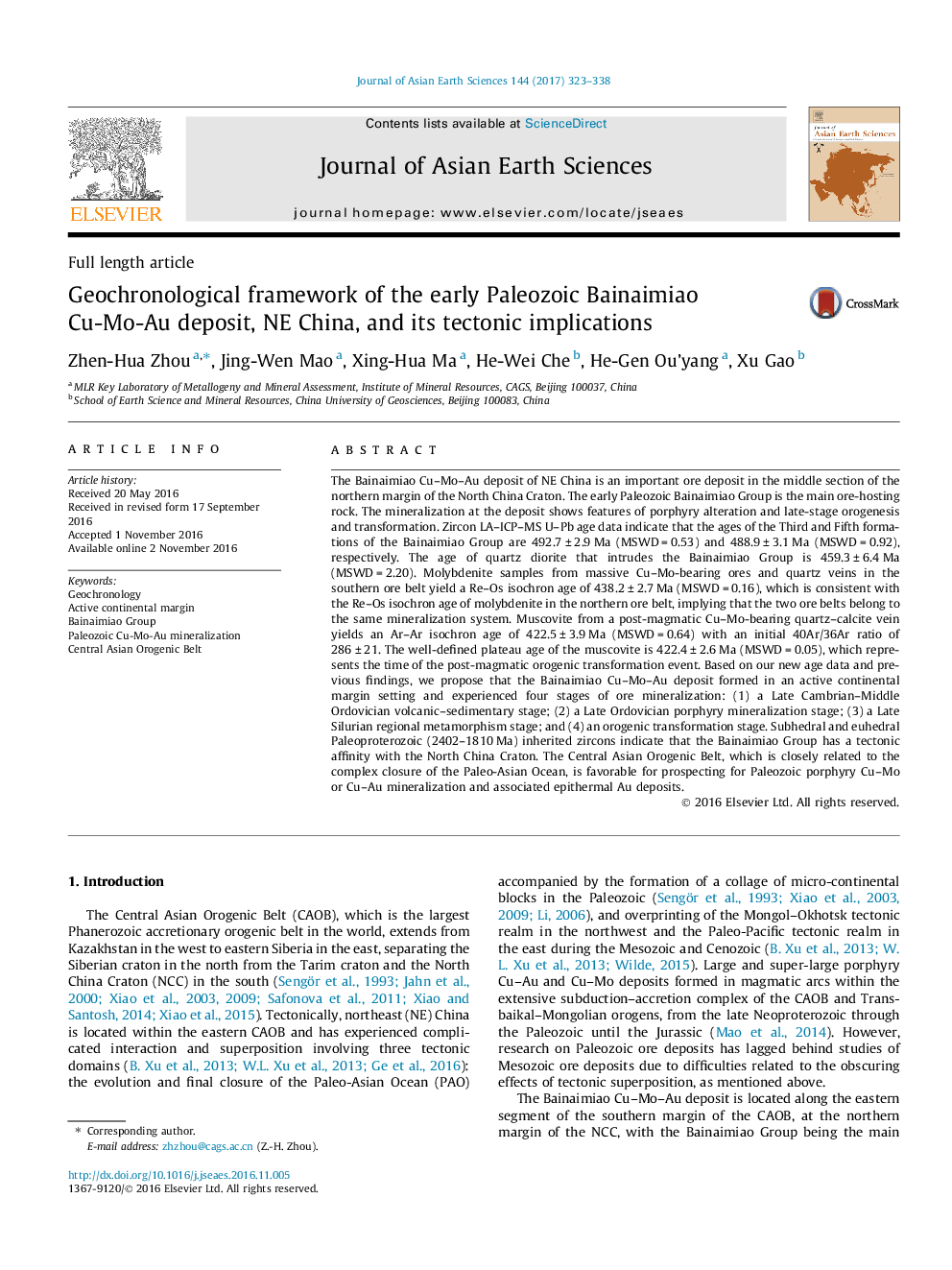| کد مقاله | کد نشریه | سال انتشار | مقاله انگلیسی | نسخه تمام متن |
|---|---|---|---|---|
| 5785985 | 1640328 | 2017 | 16 صفحه PDF | دانلود رایگان |

- The Bainaimiao deposit experienced four ore mineralization stages.
- The deposit formed under the Paleo-Asian Ocean subduction active continental margin environment.
- The Paleozoic Cu-Mo-Au mineralization is closely related with the complex closure of the Paleo-Asian Ocean.
The Bainaimiao Cu-Mo-Au deposit of NE China is an important ore deposit in the middle section of the northern margin of the North China Craton. The early Paleozoic Bainaimiao Group is the main ore-hosting rock. The mineralization at the deposit shows features of porphyry alteration and late-stage orogenesis and transformation. Zircon LA-ICP-MS U-Pb age data indicate that the ages of the Third and Fifth formations of the Bainaimiao Group are 492.7 ± 2.9 Ma (MSWD = 0.53) and 488.9 ± 3.1 Ma (MSWD = 0.92), respectively. The age of quartz diorite that intrudes the Bainaimiao Group is 459.3 ± 6.4 Ma (MSWD = 2.20). Molybdenite samples from massive Cu-Mo-bearing ores and quartz veins in the southern ore belt yield a Re-Os isochron age of 438.2 ± 2.7 Ma (MSWD = 0.16), which is consistent with the Re-Os isochron age of molybdenite in the northern ore belt, implying that the two ore belts belong to the same mineralization system. Muscovite from a post-magmatic Cu-Mo-bearing quartz-calcite vein yields an Ar-Ar isochron age of 422.5 ± 3.9 Ma (MSWD = 0.64) with an initial 40Ar/36Ar ratio of 286 ± 21. The well-defined plateau age of the muscovite is 422.4 ± 2.6 Ma (MSWD = 0.05), which represents the time of the post-magmatic orogenic transformation event. Based on our new age data and previous findings, we propose that the Bainaimiao Cu-Mo-Au deposit formed in an active continental margin setting and experienced four stages of ore mineralization: (1) a Late Cambrian-Middle Ordovician volcanic-sedimentary stage; (2) a Late Ordovician porphyry mineralization stage; (3) a Late Silurian regional metamorphism stage; and (4) an orogenic transformation stage. Subhedral and euhedral Paleoproterozoic (2402-1810 Ma) inherited zircons indicate that the Bainaimiao Group has a tectonic affinity with the North China Craton. The Central Asian Orogenic Belt, which is closely related to the complex closure of the Paleo-Asian Ocean, is favorable for prospecting for Paleozoic porphyry Cu-Mo or Cu-Au mineralization and associated epithermal Au deposits.
Journal: Journal of Asian Earth Sciences - Volume 144, 15 August 2017, Pages 323-338